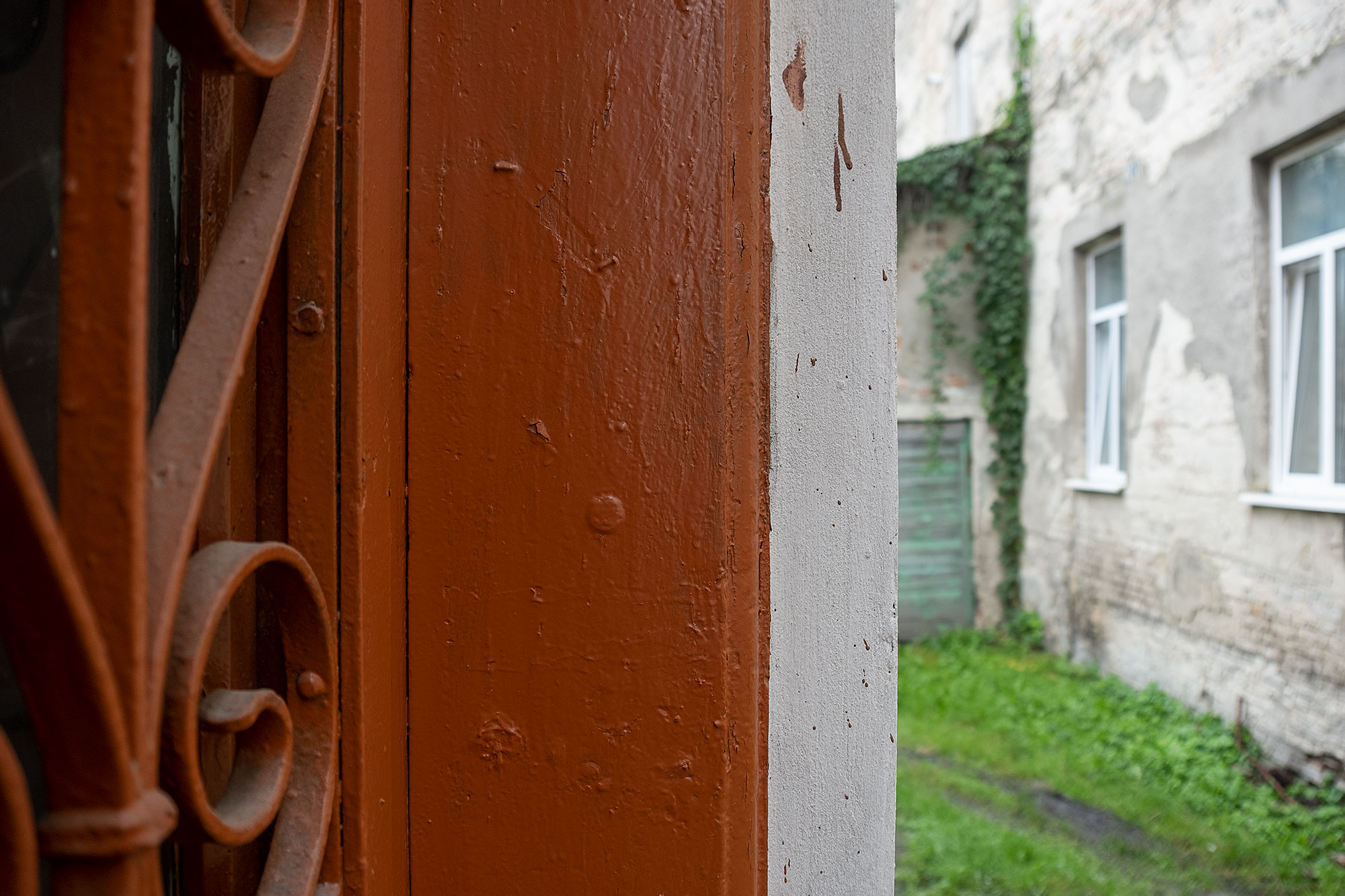On 25 August, the TV crew and I left Lviv. It was the beginning of a 10-day journey that would take us in a wide loop through Galicia, Podolia and Bukovina. Brody, Pochaiv and Zbarazh were on the agenda for the first two days.













After a long period of absence due to the pandemic, the days of the trip had also been days of reunion with good friends. On the first day of the trip, we were joined by friend and driver Vasyl, who would be an invaluable help on this journey as well. After a short break in Busk, Brody was our first stop. Perhaps the most Jewish town in the Austro-Hungarian Empire, Brody was the birthplace of writer Joseph Roth. Two important landmarks remain from this period: one of formerly two Jewish cemeteries and a famous fortress synagogue from the mid-18th century.
The team had already shot the first pictures of the Great Synagogue from the outside and we were just looking for the successor building to a now demolished synagogue when we were approached by a man who offered to open the Great Synagogue for us. He held word and half an hour later we were standing inside this impressive building. Unfortunately, there is nothing positive to report. Just a few months earlier, another part of the building collapsed. Sasha Nazar from Lviv and activists from Brody are trying to do something to preserve this unique synagogue, but the future looks bleak. We spent the rest of the day in never-ending rain at the Jewish cemetery.
The next morning brought brighter weather and we set off towards Ternopil. On the way – in Pochaiv – there is a former synagogue that I did not know about. After the war, it was rededicated as a school and extended. The Soviet authorities used tombstones from the destroyed Jewish cemetery as building material. They are clearly visible in the masonry. To this day, the former synagogue is located in a school compound, but it is abandoned and threatens to fall into further disrepair.
In Zbarazh we met Tetyana Fedoriv, a historian and teacher who taught herself Hebrew in order to decipher the tombstones in the Jewish cemetery and publish the inscriptions in a book. Tetyana is a good example of those young Ukrainians who with an open mind and curiously research the history of their home towns and do something for the preservation of the multi-ethnic heritage. The fact that people like Tetyana are heard is important for the self-perception of Ukrainians, but also for the perception of Ukraine from the outside. What she does cannot be appreciated enough.

This work is licensed under a Creative Commons Attribution-NonCommercial-NoDerivatives 4.0 International License.
We will be cruising through Ukraine on a River Cruise August 2022. It begins in Bucharest & ends in Kiev. We are planning to have a private guide for the first 4 or 5 days in Romania to visit the birthplace of my maternal grandmother & the same but perhaps 5-6 days to see Kiev, L’viv, Busk, Ladyzhyn, Rosulna, Solotwina and time permitting Sambor home of my 2 grandfathers & my wife’s grandfather as well. Can’t wait and your photos are giving us a peek into what we will be seeing.
Great pics from your journey into our shared “Vanished World”.
As a descendant from Bucovina & Galitzia who has never visited the region, I found your website a great learning experience. If you can, please include a map of your visits to “join” your trip (at least in imagining the lives of my ancestors…)
Stay Safe
Rony
Thank you for helping descendants see their ancestral shtetls. Can you please post a map of your itinerary.